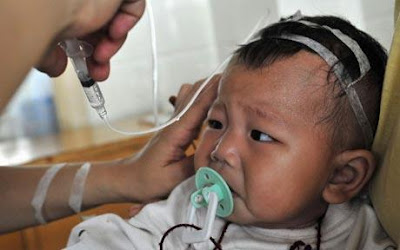WASHINGTON -- "Made in China" labels mean good quality and value for money to US consumers as up-to-date statistics show most Chinese goods meet US standards.
The US Food and Drug Administration (FDA) said on June 28 a block on imports of five species of seafood from China because of so-called contamination.

The announcement, coupled with reports of contaminated pet food ingredients, led some American media to place an equals sign between "Made in China" and substandard products.
However, a closer look at the data on Chinese imports would reveal the majority of them meet US quality standards while only a fraction of them is problematic.
The FDA regulates food, drugs, medical devices and some radiation-emitting devices. FDA data showed Chinese seafood was seized at the border less than 400 times last year. By comparison, products from the Dominican Republic was stopped over 800 times and candy from Denmark was rejected more than 500 times during the same period.
The statistics also showed that in 2006 the sale of Dominican food in the United States amounted to 300 million US dollars and Danish food hit 400 million dollars, whereas the sale of Chinese food reached 3.8 billion dollars.
From July 2006 through June of this year, the agency's inspectors stopped 1,763 food shipments from India, followed by Mexico at 1,480, China 1,368, Dominican Republic 828, Denmark 543, Vietnam 533, Japan 508 and Italy 482 and Indonesia 460.
US government data indicated that China sent more food products, at least in terms of dollar value, into the United States than any of these countries except Mexico in 2006.
Mexico shipped 9.8 billion dollars worth of food to the United States, followed by China, which shipped 3.8 billion dollars. By comparison, Italy shipped 2.9 billion dollars worth of food to the United States, followed by Indonesia at 1.5 billion, India 1.2 billion, Vietnam 1.1 billion and Japan 500 million.
At the same time the FDA issued an import alert for Chinese fish, it also issued alerts for Mexican cantaloupes and basmati rice from India among others.
In terms of food violation counts, Mexico and India are well ahead of China. Salmonella mostly found on spices, seeds and shrimps is the frequent reason for the denial of entry from India. Filth is the major reason that food from Mexico, including candy, chilies, juice, seafood and cheese, was rejected.
A recent report issued by China's quality watchdog, the General Administration of Quality Supervision, Inspection and Quarantine, sheds more light on the issue.
Last year, less than 1 percent of the Chinese food products were rejected by the United States due to quality problems, the report said, adding that the figure is even lower than the percentage of substandard USfood products China rejected last year.
Carl Nielsen, a retired FDA official who oversaw import operation and policy, said no single country should be faulted for quality problems.
"What we are experiencing is massive globalization," he told The New York Times.
Globalization urges businesses all over the world to seek the utmost cost-saving products to achieve maximum profits. In so doing, importers do everything in their power to drive down prices of products whereas exporters go all out to reduce costs, Nielsen said.
Wherever there is a loophole in quality oversight, there is a hotbed of poor-quality or substandard products, he added.
Since any merchandise could be the result of international trade, problems with quality may rise anywhere during the process, from raw materials and manufacturing to distribution.
Improving food safety, therefore, needs the joint efforts of governments at all levels at home and cooperation among countries when it comes to conveying complete and correct quality information to the consumers.
Source: China Daily





 “The EU has to strictly examine imported goods,” he said, adding the member states should make every effort to kill demand for cheap forged goods. In another Chinese case, the European Union has decided to crack down on imports of rice from China, saying that the Chinese authorities had failed to filter out products containing unauthorised genetically-modified (GM) material. “Despite measures announced by the Chinese authorities in 2007, alerts concerning the presence of the unauthorised GM rice ‘Bt 63’ were reported until late 2007,” the European Commission said in a statement.
“The EU has to strictly examine imported goods,” he said, adding the member states should make every effort to kill demand for cheap forged goods. In another Chinese case, the European Union has decided to crack down on imports of rice from China, saying that the Chinese authorities had failed to filter out products containing unauthorised genetically-modified (GM) material. “Despite measures announced by the Chinese authorities in 2007, alerts concerning the presence of the unauthorised GM rice ‘Bt 63’ were reported until late 2007,” the European Commission said in a statement.

 "There is a certain amount of pirated DVDs sold in China that are produced outside of the country," Yin Xintian, the director of the State Intellectual Property Office, told reporters.
"There is a certain amount of pirated DVDs sold in China that are produced outside of the country," Yin Xintian, the director of the State Intellectual Property Office, told reporters.
